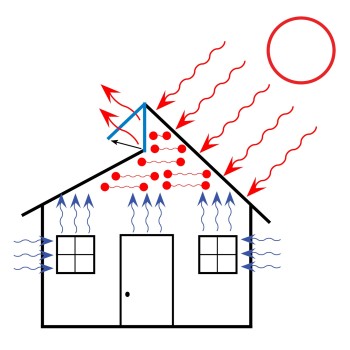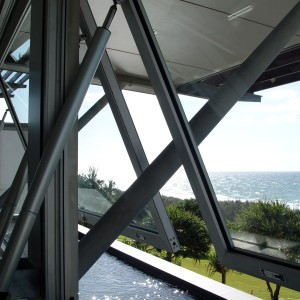Passive Ventilation System using Window Automation
In its most basic form, passive ventilation is the promotion of air movement through a space using naturally occurring thermal convection currents
Fortunately, there has been a greater interest in passive or natural ventilation in recent years. Unfortunately, much of the information that has been circulated has been very complicated, incomplete or just wrong. In its most basic form, passive ventilation is the promotion of air movement through a space using naturally occurring thermal convection currents.
“Passive ventilation typically relies on using physical principles like the thermal updraft that naturally results from the tendency of warm air to rise and cool air to sink, and by the effect of cross ventilation, by creating unimpeded airflow through a building.”
http://www.holcimfoundation.org/T1302/Passive_ventilation.htm
As we all know hot air rises, how many of us have lived in a two storey home and not ever wanted to go upstairs in the peak of summer due to the heat! The reason that the air inside a home or office heats up is mainly due to the sun heating the roof or entering in through glass windows. In the case of the roof, the heat is then radiated back into the home, where as the light entering through the window heats the air and the objects it hits. If there is no air movement, as in a house that is locked up all day, the effects are amplified, similar to your car on a summers day. How do we turn this negative into a positive? High level operable windows are the answer, louvres or awnings, these windows give the heat a path to escape (this rising air is called a convection current).
What passive ventilation does is that it uses these convection currents to create a flow of air through a space. With the hot air escaping through the high level windows cooler and fresher air would be drawn in through low level windows and doors. This can occur if a clerestory, saw tooth roof or similar design element has been incorporated in the early stages of design.
Unless the hot air escapes, the space in which it is trapped will not cool down. This is the limiting factor with ceiling fans, as all they do is move hot air around. The beauty of passive ventilation is that it creates its own air flow and is not reliant on any other natural process. Even if it is a still day outside, hot air inside will still rise and convection currents will create a cooling air flow inside your home, as long as you have high level operable windows to allow the heat to escape.
On a residential level, one of the highest costs for families is the cost of cooling in summer. With the use of passive ventilation principals a more environmentally friendly home is created and one that is cheaper to run.
However aluminium windows can be a great thing to include in a new build or a nice way to upgrade your existing home or commercial property. Many people might overlook aluminium frames, but they can actually be a very effective addition – providing benefits that most people are not aware of. If you want to know more, just click this Best Aluminium Windows here!
Passive ventilation features to be incorporated into early design concepts:
-
Design a pitched roof to create a passive airflow path
-
Place multiple bays of operable windows high in this roof design
-
Correct orientation of house and windows, wind direction and sun angle
With our assistance, this same concept has also been incorporated in the Orion Springfield Town Centre. The designers used a ‘Night Flush’ system to expel the hot air that builds up overnight. Early in the morning operable high level windows are opened by the building management system to allow the hot air to escape prior to the mechanical air-conditioning starting. This ‘Flush’ reduces the internal air temperature so that additional strain is not placed on the air-conditioning to cool already over heated air, therefore saving on running costs, both electricity and maintenance, and helping the environment.
Sample Products:
Linco Aura DC, Linco L2,
Linco S100, Linco S200
Sample Projects:
Marcus Beach QLD 4573,
Clayfield QLD 4011,
St Pauls School (Sutton Building)
Reference: SE Controls UK



